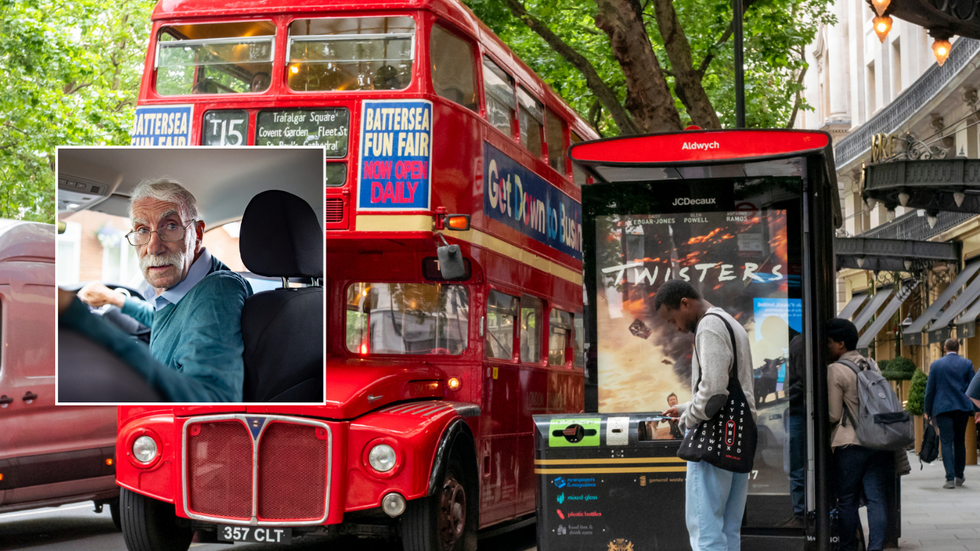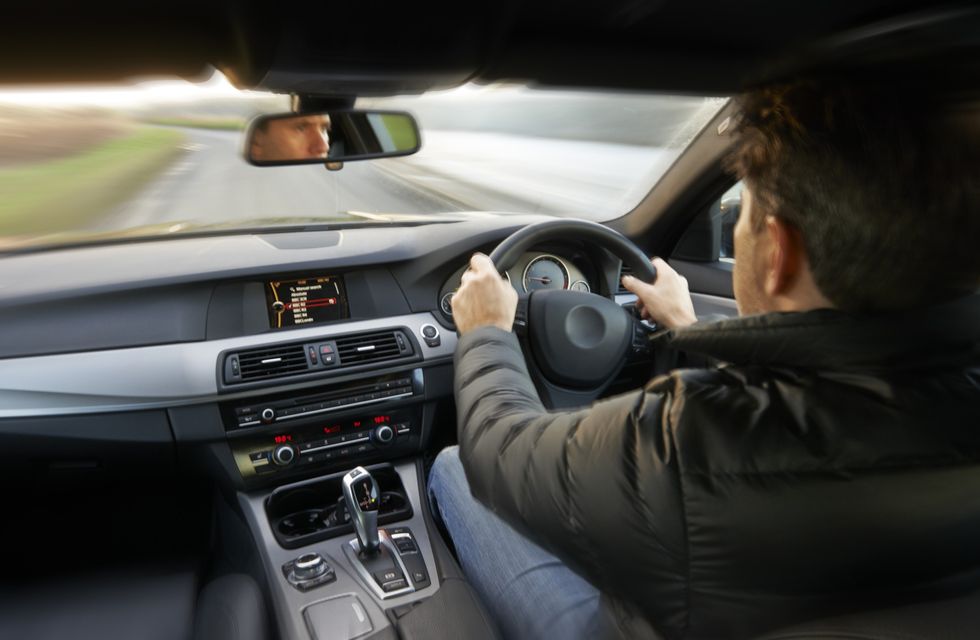Hemma Visavadia
Guest Reporter
Four in 10 drivers across the UK have warned they have no other option than to use their cars for commuting, with elderly drivers seen as most reliant on vehicles due to unreliable public transport.
It comes after a new report found that for drivers living in more rural locations, particularly outside of towns and cities, this figure rises dramatically to 70 per cent.
The findings, released today, highlight many Britons' continued reliance on private vehicles despite the growing emphasis on public transport options.
The research revealed that cars remain "central to so many people's lives", with the majority finding it difficult to find alternatives to their vehicles.
Do you have a story you'd like to share? Get in touch by emailing [email protected]

Meanwhile, taking the bus to work, a more common practice in larger cities, was only seen as a viable option for 31 per cent of drivers, according to the survey.
This figure rises to 50 per cent for those living in town and city centres where public transport options are typically better. For drivers living in the suburbs, the proportion drops to just 26 per cent who believe buses are a feasible commuting alternative.
The situation is even more stark in rural areas, where only 11 per cent of drivers consider buses a viable option for their daily commute. The survey shows that 81 per cent of respondents would find it very difficult to adjust their lifestyle to being without a vehicle.
According to the data, this figure has remained "remarkably constant" since the RAC first began asking this question in 1989, with car dependency increasing significantly with age.
While 65 per cent of under-25s stated they would struggle without a car, this rises to 77 per cent for those aged between 25 and 44. The proportion increases further to 84 per cent among 45-64 year olds, before peaking at 86 per cent for those aged over 65.
More than half (53 per cent) of drivers said they would use their vehicles less if public transport was more convenient, reliable and affordable. This represents a decrease from the peak of 59 per cent recorded in 2019.
RAC head of policy Simon Williams said: "Our research shows that the car remains central to so many people's lives. While those in more rural areas are most car dependent, half of those in urban centres also don't see public transport as a viable alternative for their daily commute.
"Young people clearly have a desire and, in many cases, a need to drive, but the convenience and freedom it brings seems to become more important as the decades pass.
"While the current Government is very focused on improving public transport across the board, we suspect the car will always be essential to many people's lives."
Looking at some of the most common journey types, nearly two-thirds (63 per cent) of drivers always commute by car.
Shopping for groceries is another car-dependent activity, with 57 per cent always driving for this purpose. The school run sees 42 per cent of drivers always using their cars to take children to school, nursery or clubs.
Getting to airports was seen as a car-dependent move for 40 per cent of drivers, while 26 per cent always drive to reach mainline railway stations. In stark contrast, just eight per cent of commuters walk, cycle or use public transport, with only three per cent doing so for grocery shopping.
LATEST DEVELOPMENTS:

The low uptake of alternatives may be explained by the fact that just 29 per cent of all drivers believe public transport is an attractive alternative to driving.
This figure has improved slightly from 26 per cent in 2023 and 23 per cent in 2022. Young drivers were seen to be the most receptive to public transport, with 41 per cent of under-25s viewing it positively.
More than half (53 per cent) of drivers said they would use their vehicles less if public transport was more convenient, reliable and affordable. This represents a decrease from the peak of 59 per cent recorded in 2019.
Find Out More...
It comes after a new report found that for drivers living in more rural locations, particularly outside of towns and cities, this figure rises dramatically to 70 per cent.
The findings, released today, highlight many Britons' continued reliance on private vehicles despite the growing emphasis on public transport options.
The research revealed that cars remain "central to so many people's lives", with the majority finding it difficult to find alternatives to their vehicles.
Do you have a story you'd like to share? Get in touch by emailing [email protected]

Meanwhile, taking the bus to work, a more common practice in larger cities, was only seen as a viable option for 31 per cent of drivers, according to the survey.
This figure rises to 50 per cent for those living in town and city centres where public transport options are typically better. For drivers living in the suburbs, the proportion drops to just 26 per cent who believe buses are a feasible commuting alternative.
The situation is even more stark in rural areas, where only 11 per cent of drivers consider buses a viable option for their daily commute. The survey shows that 81 per cent of respondents would find it very difficult to adjust their lifestyle to being without a vehicle.
According to the data, this figure has remained "remarkably constant" since the RAC first began asking this question in 1989, with car dependency increasing significantly with age.
While 65 per cent of under-25s stated they would struggle without a car, this rises to 77 per cent for those aged between 25 and 44. The proportion increases further to 84 per cent among 45-64 year olds, before peaking at 86 per cent for those aged over 65.
More than half (53 per cent) of drivers said they would use their vehicles less if public transport was more convenient, reliable and affordable. This represents a decrease from the peak of 59 per cent recorded in 2019.
RAC head of policy Simon Williams said: "Our research shows that the car remains central to so many people's lives. While those in more rural areas are most car dependent, half of those in urban centres also don't see public transport as a viable alternative for their daily commute.
"Young people clearly have a desire and, in many cases, a need to drive, but the convenience and freedom it brings seems to become more important as the decades pass.
"While the current Government is very focused on improving public transport across the board, we suspect the car will always be essential to many people's lives."
Looking at some of the most common journey types, nearly two-thirds (63 per cent) of drivers always commute by car.
Shopping for groceries is another car-dependent activity, with 57 per cent always driving for this purpose. The school run sees 42 per cent of drivers always using their cars to take children to school, nursery or clubs.
Getting to airports was seen as a car-dependent move for 40 per cent of drivers, while 26 per cent always drive to reach mainline railway stations. In stark contrast, just eight per cent of commuters walk, cycle or use public transport, with only three per cent doing so for grocery shopping.
LATEST DEVELOPMENTS:
- Driving law changes could see pavement parking banned amid calls to 'address systemic barriers' to cycling
- Nissan to launch more hybrid cars for drivers who 'don't want to recharge' alongside new electric vehicles
- UK car production at risk as Reeves declines to help after Vauxhall plant closure and £600m Mini delay

The low uptake of alternatives may be explained by the fact that just 29 per cent of all drivers believe public transport is an attractive alternative to driving.
This figure has improved slightly from 26 per cent in 2023 and 23 per cent in 2022. Young drivers were seen to be the most receptive to public transport, with 41 per cent of under-25s viewing it positively.
More than half (53 per cent) of drivers said they would use their vehicles less if public transport was more convenient, reliable and affordable. This represents a decrease from the peak of 59 per cent recorded in 2019.
Find Out More...
